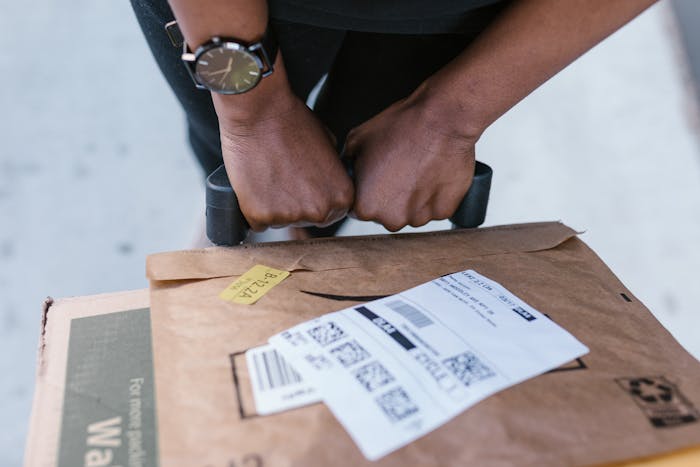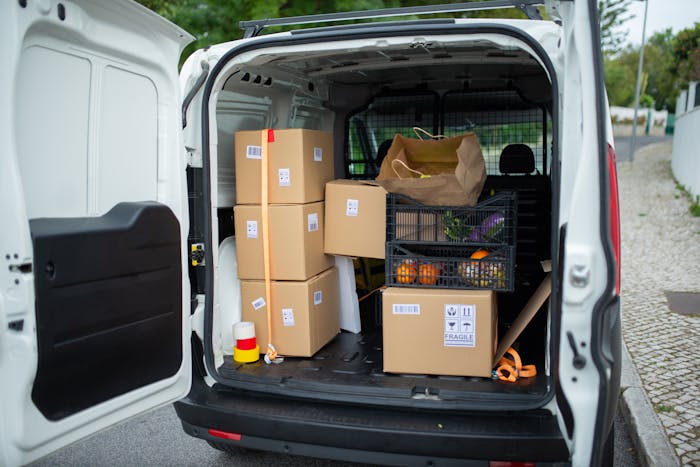In today's world, everything from buying stuff to getting receipts can be done online.
You might wonder, "What's the point of using packing slips?"
But hold on!
Packing slips are pretty useful, and they're not hard to deal with. They can save you time and money. Think of them as a backup plan to make sure you're sending out the right stuff.
In this article, we'll talk about what packing slips are, how you can make one, and why they're so important for shipping stuff.

What is a packing slip?
A packing slip, also known as a waybill, packing list, or shipping list, is a piece of paper that comes with a package. It has important stuff written on it, like the name and address of the person getting the package.
The slip also has other details, such as SKU numbers (like product codes), how heavy and big the package is, and how many items are in it.
When your shipping team is putting together a package, they look at the packing slip to see what stuff they need to pack and send. Then, they put the slip inside the package along with all the things that were ordered.
Once the package reaches the customer, they can check the packing slip to make sure everything is right. They can look at the order date, order number, and what's actually in the package to double-check.
Packing slips are handy because they show what should be in the package. They're super useful if something's broken or missing. This is even more important if you send one order in different boxes!
By looking at the packing slip, you can quickly figure out what's wrong and get a refund or replacement for any damaged stuff.
When you're shipping stuff across borders, like sending things internationally, the packing slip comes in handy. Instead of going inside the package, it goes in a special pouch stuck to the outside.
Customs usually like to see a commercial invoice, but they'll also take a look at the packing slip if it's there. It helps them figure out how much the stuff in the package is worth.
What Sets Apart a Packing Slip from a Shipping Label

There are quite a few ways that a packing slip and a shipping label are different because they do different jobs.
First off, the shipping label goes on the outside of the box, but the packing slip hangs out inside the package. That's because the shipping label is mainly for the delivery folks.
The shipping label helps you keep tabs on and recognize the packages. It's got info about who's sending it and who's getting it, plus how heavy it is.
Usually, there's a barcode or QR code on the label to make tracking simple. And if there's anything special about how it should be delivered, like needing a signature, that gets written on there too.
If a recipient is receiving more than one box, they'll find a shipping label attached to each package. On the other hand, there is often only one packing slip for an entire order, even if you deliver it in multiple packages.
Although you'll employ them in distinct ways, both documents play a crucial role in ensuring that the shipment is transported, cleared by Customs, and delivered to the correct recipient.
The shipping label helps lower the odds of a package going missing or being treated badly. And the packing slip ensures the customer gets the stuff they bought in good shape.
How a Packing Slip Differs from an Invoice
An invoice is like a receipt for a business deal. When someone buys stuff from a business, the business sends them an invoice along with their order.
The invoice has a list and details of what was bought, how much it all costs, how to pay, and when it's due.
Usually, when you buy stuff, you get both a packing slip and an invoice. But sometimes, things might switch up.
For example, if you're buying a gift, you'll get the invoice because you're the one paying for it. But the person getting the gift will find the packing slip with it.
How to Create a Packing Slip

Creating a packing slip can be done in a few different ways. You can use ready-made templates in Excel or Google Sheets. Another option is to print them using a labeling service, or you can generate them through inventory management software.
Regardless of the method you choose, make sure your packing slips are easy to understand, straightforward, and include all the important details. We'll cover what info you need in the next part.
What Details to Include on a Packing Slip
Here are the most important details you need to include on a packing slip.
- Include the sender's details like their name, address, and contact info. It's important to represent your business and your brand well, so make sure your company's name, address, and how to reach you are on there. If you have a logo, toss that on too.
- Recipient’s name, shipping address, and contact information: A packing slip needs to show the recipient’s name, which might differ from the buyer’s name. It should also include the shipping address, where the package will be delivered. However, this address may not be the same as the billing address. If both addresses are used on the slip, it's essential to clearly distinguish between them to avoid any confusion.
- Purchase order number: Including the purchase order or PO number on all packing slips makes it simpler to verify that the correct order was delivered.
- Order date and slip number: Adding the date and time when the customer placed their order is useful information for the packing slip. Additionally, assigning a unique number to each packing slip can assist in tracking orders and addressing any issues that may arise.
- Itemized list of products ordered and shipped: Include all the products the customer ordered in the packing slip. This list helps ensure that all items have been packed and shipped correctly, validating your fulfillment process. Customers can also use the list to verify that they received everything they ordered and paid for.
- Itemized list of out-of-stock items: If any items in the order couldn't be fulfilled, list them on the packing slip and indicate if they will be sent separately.
- SKU or UPC for each item: In addition to the product names and descriptions, there's a spot for an SKU (stock keeping unit) number or UPC (universal product code) on your packing slip. This helps you keep track of your inventory.
- Product quantities: It's also important to have a place for the quantity of each product on the packing slip. This makes it easier to check that you're sending the right number of products for each order.
- Size and weight information for each item: You can also decide to include the general size and weight of each item on the packing slip if you want to.
Is it Necessary to Have a Packing Slip
A packing slip isn’t legally required, like a receipt or a bill of lading, but it's extremely important for managing your inventory.
Having a packing slip helps you or your team make sure you're grabbing the right items before sending them out. This can prevent expensive mistakes during the packing and shipping process.
It also lets customers double-check that they got everything they ordered. It might seem minor, but it can really affect how satisfied customers are.
Optimize your shipping operation with eLogii
Getting orders to customers quickly is super important for a good shopping experience.
That's why it's smart to use all the tools you've got to make sure your customers get their stuff fast.
With the eLogii route optimization software, you can enhance customer experience by sending them timely email and text updates about their packages. You can also plan optimal routes for your drivers using the app.
In these routes, you can mark important tasks for priority delivery and provide precise delivery times for all other packages.
Even more so, you can personalize the text or email notifications for your customers.
Your delivery drivers can snap a photo using the app, which you can keep and send to customers as proof that their delivery was made.
